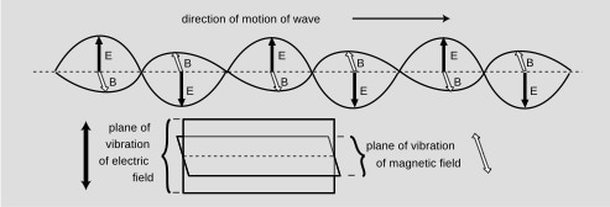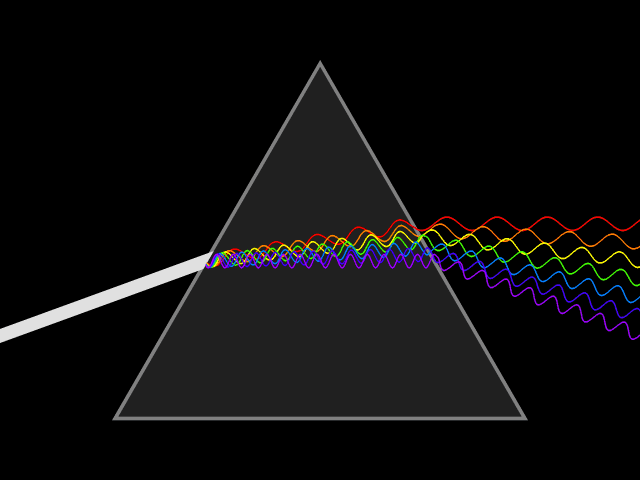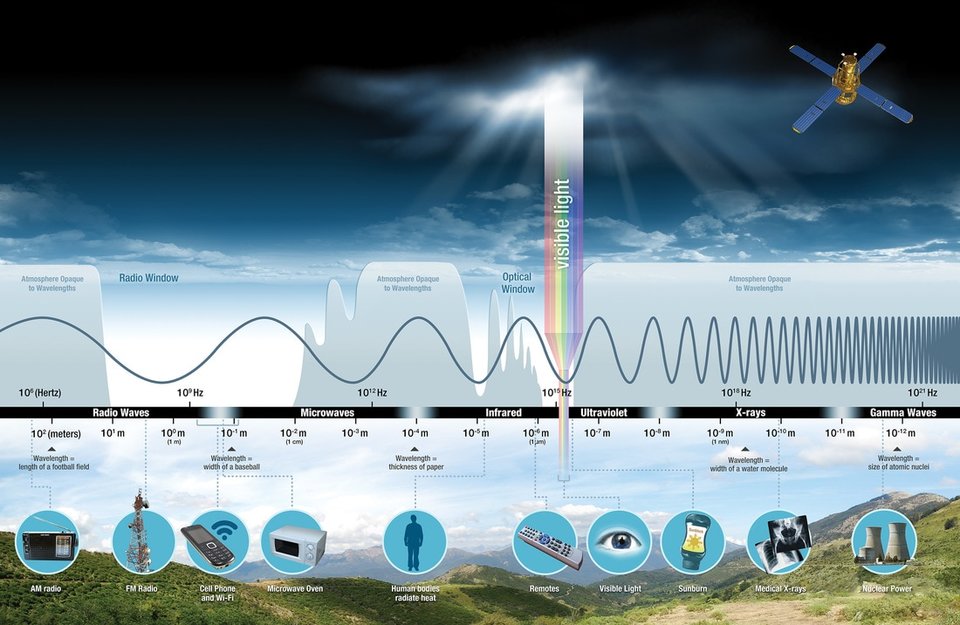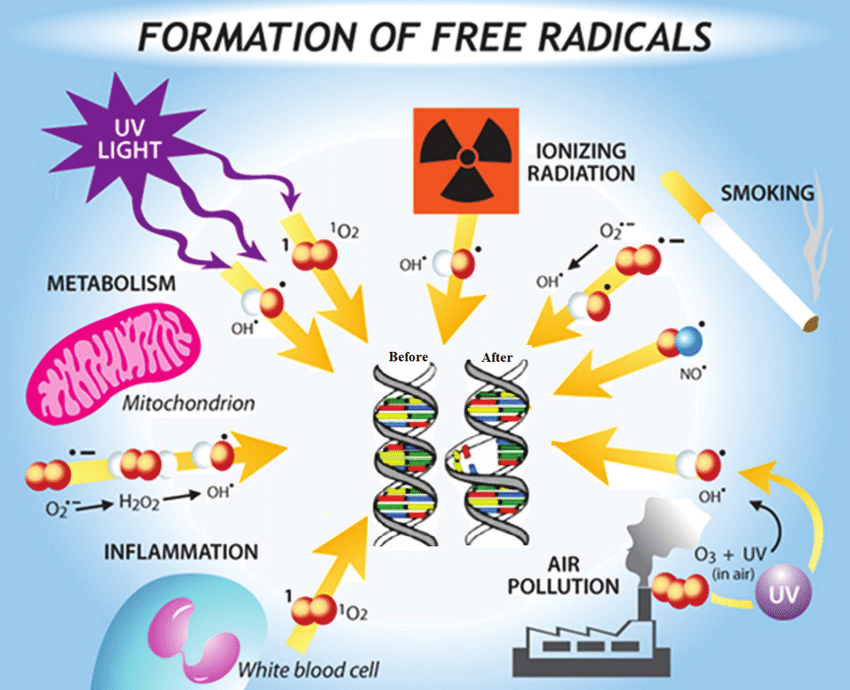“If you want to find the secrets of the universe,
think in terms of energy, frequency and vibration.”
- Nikola Tesla
What is PHysics?
Physics is the use of the scientific method to find out the basic principles governing light and matter, and to discover the implications of those laws.
Many physical phenomena are not themselves light or matter, but are properties of light or matter or interactions between light and matter. For instance, motion is a property of all light and some matter, but it is not itself light or matter. The pressure that keeps a bicycle tire blown up is an interaction between the air and the tire. Pressure is not a form of matter in and of itself. It is as much a property of the tire as of the air.
Many physical phenomena are not themselves light or matter, but are properties of light or matter or interactions between light and matter. For instance, motion is a property of all light and some matter, but it is not itself light or matter. The pressure that keeps a bicycle tire blown up is an interaction between the air and the tire. Pressure is not a form of matter in and of itself. It is as much a property of the tire as of the air.
What is matter?
Matter can be defined as anything that is affected by gravity, i.e., that has weight or would have weight if it was near the Earth or another star or planet massive enough to produce measurable gravity.
Some things that appear weightless actually do have weight, and so qualify as matter. Air has weight, and is thus a form of matter even though a cubic inch of air weighs less than a grain of sand. A helium balloon has weight, but is kept from falling by the force of the surrounding more dense air, which pushes up on it.
Some things that appear weightless actually do have weight, and so qualify as matter. Air has weight, and is thus a form of matter even though a cubic inch of air weighs less than a grain of sand. A helium balloon has weight, but is kept from falling by the force of the surrounding more dense air, which pushes up on it.
What is light?
Light can be defined as anything that can travel from one place to another through empty space and can influence matter, but has no weight.
For example, sunlight can influence your body by heating it or by damaging your DNA and giving you skin cancer. The physicist’s definition of light includes a variety of phenomena that are not visible to the eye, including radio waves, microwaves, x-rays, and gamma rays. These are the “colors” of light that do not happen to fall within the narrow violet-to-red range of the rainbow that we can see.
For example, sunlight can influence your body by heating it or by damaging your DNA and giving you skin cancer. The physicist’s definition of light includes a variety of phenomena that are not visible to the eye, including radio waves, microwaves, x-rays, and gamma rays. These are the “colors” of light that do not happen to fall within the narrow violet-to-red range of the rainbow that we can see.
What is an electromagnetic wave?
Electromagnetic waves are waves in which there are both electric and magnetic fields.
Light is an electromagnetic wave
Once created, the wave spreads out through space without any need for charges or currents along the way to keep it going. As the electric field oscillates back and forth, it induces the magnetic field, and the oscillating magnetic field in turn creates the electric field. The whole wave pattern propagates through empty space at the speed of light.
Light is an electromagnetic wave
Once created, the wave spreads out through space without any need for charges or currents along the way to keep it going. As the electric field oscillates back and forth, it induces the magnetic field, and the oscillating magnetic field in turn creates the electric field. The whole wave pattern propagates through empty space at the speed of light.
What is a frequency?
Frequency is the number of cycles of a repeating event per unit time.
Frequency is an important parameter used to specify the rate of oscillatory and vibratory phenomena, such as mechanical vibrations, audio (sound) signals, radio waves and light.
Frequency is an important parameter used to specify the rate of oscillatory and vibratory phenomena, such as mechanical vibrations, audio (sound) signals, radio waves and light.
The Electromangetic Spectrum
|
Analogous to the spectrum of visible light, there exists an entire spectrum electromagnetic frequencies (waves), of which the visible spectrum is one segment.
The electromagnetic spectrum can be broken up into various segments. Radio waves have wavelengths (length of the wave) that are comparable to the size of a radio antenna, i.e., meters to tens of meters. Microwaves were named that because they have much shorter wavelengths than radio waves. The infrared, visible, and ultraviolet obviously have much shorter wavelengths, because otherwise the wave nature of light would have been as obvious to humans as the wave nature of ocean waves. Ultraviolet, x-rays, and gamma rays all lie on the short-wavelength side of visible; all three of which can disrupt DNA and cause cancer (Crowell, 2007). |
The Harms of Non-Native EMFs
In our modern, interconnected world, the pervasive presence of electromagnetic fields (EMFs) is undeniable. From Wi-Fi signals to cellphones and Bluetooth devices, and even sources of "dirty electricity", including electric heaters and blankets - we are surrounded by a web of technological wonders. However, the dark side of this convenience lies in the potential harms associated with exposure to non-native EMFs.
Research suggests that prolonged exposure to EMFs and the subsequent formation of peroxynitrite may contribute to various health issues, including oxidative stress, inflammation, and impaired mitochondrial function. These factors have been linked to conditions such as chronic fatigue, sleep disturbances, and even more severe health concerns.
Research suggests that prolonged exposure to EMFs and the subsequent formation of peroxynitrite may contribute to various health issues, including oxidative stress, inflammation, and impaired mitochondrial function. These factors have been linked to conditions such as chronic fatigue, sleep disturbances, and even more severe health concerns.
Understanding the Mechanism: EMFs and Voltage-Gated Calcium Channels
Non-native EMFs, emitted by devices like Wi-Fi routers and cellphones, have been linked to biological effects through the activation of voltage-gated calcium channels (VGCCs). VGCCs are a specialized class of ion channels found in the cell membrane. These channels play a pivotal role in cellular signaling, allowing the selective passage of ions based on changes in membrane voltage (electric fields). The opening and closing of these channels are regulated by alterations in the cell's membrane potential. When exposed to these EMFs, VGCCs in cell membranes open, allowing an influx of calcium ions. This disruption in cellular calcium balance triggers a cascade of events.
The Domino Effect: From Calcium Influx to Peroxynitrite Formation
The excessive calcium influx resulting from EMF exposure initiates the generation of reactive oxygen species (ROS) in the form of superoxide anion and nitric oxide. These ROS, in turn, combine to form peroxynitrite, a highly reactive and damaging free radical. Here are the steps in sequence:
- Calcium Signaling: Intracellular calcium (Ca2+) is a crucial second messenger involved in numerous cellular processes, including signal transduction, gene expression, and cell communication. Calcium signaling is tightly regulated, with its concentration carefully controlled within specific cellular compartments. The role of increased intracellular Ca2+ following EMF exposure is well documented via the activation of voltage gated calcium channels.
- Nitric Oxide Synthase (NOS) Activation: Excess intracellular calcium can activate an enzyme called nitric oxide synthase (NOS) - eNOS and nNOS. NOS is responsible for the synthesis of nitric oxide (NO) from the amino acid L-arginine. The activation of NOS is a complex process involving the binding of calcium-calmodulin to NOS, leading to the production of NO.
- Superoxide Production: The increased production of NO in the presence of excess intracellular calcium can lead to the generation of superoxide (2−O2−). This occurs through a process known as the "uncoupling" of NOS. Under normal conditions, NOS produces NO; however, in conditions of oxidative stress or altered calcium levels, NOS may generate superoxide instead of NO. Superoxide is a ROS generated during normal cellular processes, such as respiration and metabolism. It is a free radical with unpaired electrons, making it highly reactive. Superoxide can initiate oxidative damage to cellular components, including lipids, proteins, and DNA.
- Peroxynitrite Formation: The interaction between NO and superoxide results in the nearly instantaneous formation of peroxynitrite (−ONOO−). This highly reactive molecule lasts much longer than many other ROS, and will cause damage to cellular components, including proteins, lipids, and DNA, with greater harm than other ROS due to the lengthened active time. The simultaneous presence of NO and superoxide creates a situation where the normally protective effects of NO can turn detrimental due to the formation of peroxynitrite.
- Oxidative and Nitrosative Stress: The increased levels of superoxide and peroxynitrite contribute to oxidative and nitrosative stress within the cell. These reactive oxygen and nitrogen species can lead to cellular damage, disruptions in cellular signaling pathways, and alterations in cellular function.
Protective Measures: The Inverse Relationship with Distance
One simple yet effective protective measure is to increase the distance from EMF-emitting sources. Studies show an inverse relationship between distance and the harmful effects of EMFs. Minimizing direct and prolonged contact with devices can significantly reduce exposure. So the solution is simple: physically separate yourself from wireless technology.
Aires Tech: A Fractal Matrix of Protection
For those seeking advanced protection, innovative technologies like Aires Tech offer a solution. Aires Tech devices create a coherent field in the form of a fractal matrix around biological objects. This matrix, generated by a lattice resonator formed from ringed topological lines, serves as a coherent transducer. In simpler terms, it acts as a shield against the negative influence of techogenic electromagnetic radiation across a wide range of frequencies.
Conclusion: Navigating the Electromagnetic Landscape
As we navigate the intricate web of non-native EMFs, understanding their potential harms and adopting protective measures becomes paramount. Whether through maintaining a safe distance or employing advanced technologies like Aires Tech, taking proactive steps can empower individuals to safeguard their well-being in an increasingly connected world. Prioritizing our health in the face of invisible threats is not just a choice—it's a necessity.
References
Crowell, B. (2007). Electricity and magnetism (23rd ed.). Fullerton, CA: Light and Matter.
“GLOBAL PATENT on METHOD for PROTECTING BIOLOGICAL OBJECTS from the NEGATIVE INFLUENCE of TECHNOGENIC ELECTROMAGNETIC RADIATION.” World International Property Organization, 8 Apr. 2021, cdn.shopify.com/s/files/1/0592/3946/5116/files/method-for-protection.pdf?v=1706293691.
Wei, Jinhong, et al. “Effects of Extremely Low Frequency Electromagnetic Fields on Intracellular Calcium Transients in Cardiomyocytes.” Electromagnetic Biology and Medicine, vol. 34, no. 1, 5 Feb. 2014, pp. 77–84, https://doi.org/10.3109/15368378.2014.881744. Accessed 25 Mar. 2022.
Pall, Martin L. “Electromagnetic Fields Actviaactivation of Voltage-Gated Calcium Channels to Produce Beneficial or Adverse Effects.” Journal of Cellular and Molecular Medicine, vol. 17, no. 8, 26 June 2013, pp. 958–965, https://doi.org/10.1111/jcmm.12088.
Pacher P, Beckman JS, Liaudet L. Nitric oxide and peroxynitrite in health and disease. Physiol Rev. 2007 Jan;87(1):315-424. doi: 10.1152/physrev.00029.2006. PMID: 17237348; PMCID: PMC2248324.
“GLOBAL PATENT on METHOD for PROTECTING BIOLOGICAL OBJECTS from the NEGATIVE INFLUENCE of TECHNOGENIC ELECTROMAGNETIC RADIATION.” World International Property Organization, 8 Apr. 2021, cdn.shopify.com/s/files/1/0592/3946/5116/files/method-for-protection.pdf?v=1706293691.
Wei, Jinhong, et al. “Effects of Extremely Low Frequency Electromagnetic Fields on Intracellular Calcium Transients in Cardiomyocytes.” Electromagnetic Biology and Medicine, vol. 34, no. 1, 5 Feb. 2014, pp. 77–84, https://doi.org/10.3109/15368378.2014.881744. Accessed 25 Mar. 2022.
Pall, Martin L. “Electromagnetic Fields Actviaactivation of Voltage-Gated Calcium Channels to Produce Beneficial or Adverse Effects.” Journal of Cellular and Molecular Medicine, vol. 17, no. 8, 26 June 2013, pp. 958–965, https://doi.org/10.1111/jcmm.12088.
Pacher P, Beckman JS, Liaudet L. Nitric oxide and peroxynitrite in health and disease. Physiol Rev. 2007 Jan;87(1):315-424. doi: 10.1152/physrev.00029.2006. PMID: 17237348; PMCID: PMC2248324.












